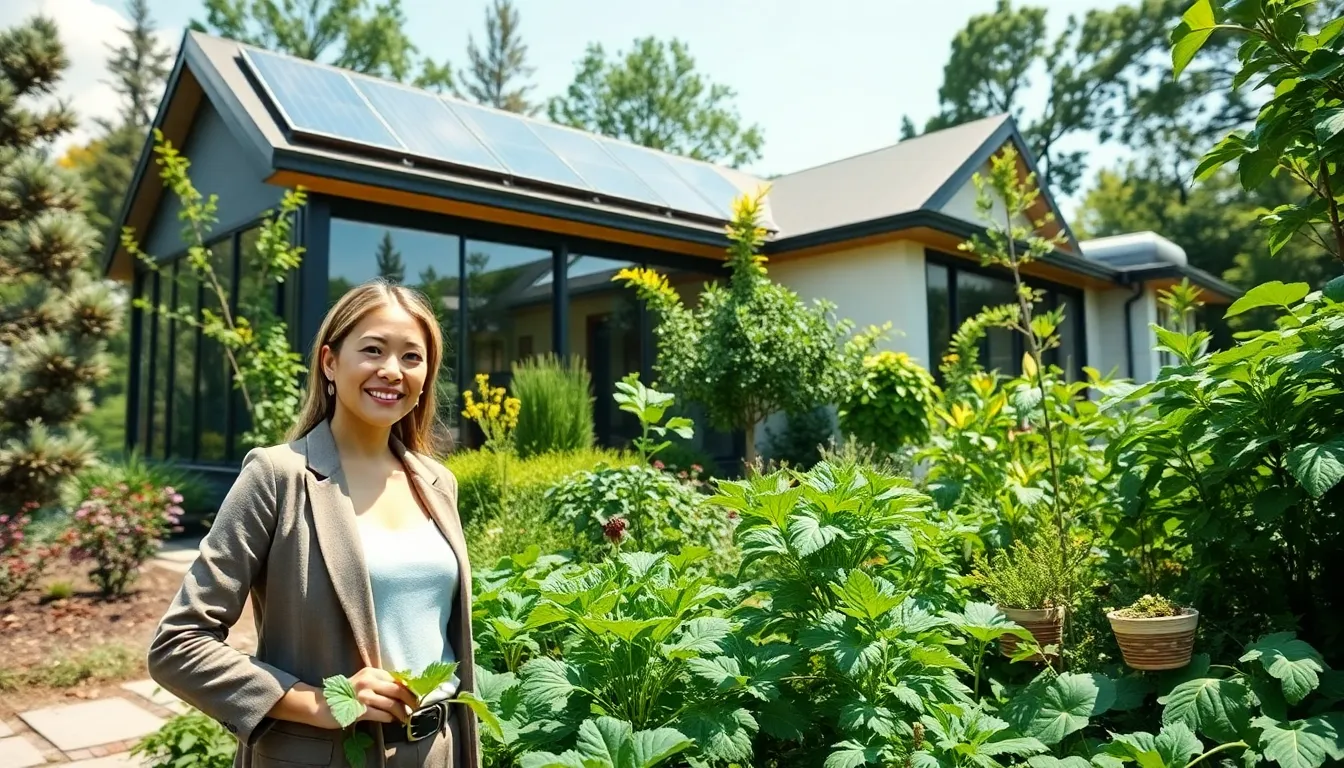In a world buzzing with hashtags and trends, have you ever paused to consider what green living truly means? It’s not just about sporting a reusable tote bag or growing a few herbs in your kitchen window (though those are nice touches). Green living embodies a lifestyle that prioritizes sustainability and environmental stewardship. So, grab a cup of your favorite organic brew, settle in, and let’s unpack the concept of green living with all the wit and wisdom it deserves.
Table of Contents
ToggleUnderstanding Green Living

Green living refers to adopting a lifestyle aimed at reducing one’s environmental impact. This concept isn’t about making colossal life changes overnight, it’s more about taking small, manageable steps towards sustainability. At its core, green living means being aware of how our daily choices affect the planet. From the products we use to the food we eat, every decision has a ripple effect on our environment. Why is this important? Because our planet isn’t just a backdrop for our existence. It’s a complex system that requires balancing human needs with the health of our ecosystems.
Understanding green living also means embracing principles of conservation and efficiency. It’s a conscious choice to live with intention and responsibility, ensuring that future generations inherit a planet that’s as vibrant as we found it. Jump into this world, and you’ll find that it’s not as daunting as it seems, rather, it can be quite liberating.
Core Principles of Green Living
What are the principles that underpin green living? Let’s take a closer look at a few of the foundational ideas:
1. Reduce, Reuse, Recycle
The three R’s are the holy grail of sustainability. Reducing waste, reusing items, and recycling materials cuts down on landfill burdens and resource depletion. Think about it: a simple shift in perspective can transform products that usually end up in the trash into valuable second chances.
2. Energy Conservation
Using less energy is a critical component of living green. This can range from a simple act of turning off the lights when leaving a room to opting for energy-efficient appliances. Every little bit helps, not just your wallet, but the planet’s well-being too.
3. Sustainable Transportation
Choosing how to get from point A to point B also matters. Biking, walking, or using public transportation reduces carbon emissions significantly. Even carpooling with neighbors can make a big difference.
4. Waste Management
Managing waste involves understanding what can be composted, reused, or recycled. Finding better ways to dispose of trash sparks cleaner living and healthier surroundings.
5. Mindful Consumption
It’s about buying less, but better. Choosing high-quality, sustainable products supports responsible companies while reducing the pressure on natural resources.
Benefits of Embracing Green Living
So, why bother with green living? The benefits are as wide and varied as the shades of green in a forest. Here are a few highlights:
1. Healthier Environment
Living green directly contributes to cleaner air and water, promoting overall public health. Reduced pollution levels are a win-win for everyone.
2. Cost Savings
Who doesn’t love saving money? When individuals reduce their energy use and waste, they often find their utility bills shrink and their expenses decrease. Investing in energy-efficient products may seem pricier upfront but pays off in the long run.
3. Enhanced Quality of Life
There’s something enriching about living in harmony with nature. Engaging in outdoor activities, gardening, or even simple nature walks can improve mental health and foster a stronger connection to the environment.
4. Positive Impact on Communities
Green living can lead to vibrant communities where people prioritize local economies and sustainability initiatives. Cohesive neighborhoods are built when people work towards common goals.
5. Legacy for Future Generations
Making sustainable choices today ensures that tomorrow’s children inherit a planet worth living on. Isn’t that a fantastic motivation? The future depends on what choices we make now.
Practical Tips for Living Green
Ready to jump into the practical side of green living? Here are some digestible tips that anyone can adopt:
1. Start Composting
It’s easier than it sounds. Composting food scraps not only reduces waste but also enriches the soil. Your garden will thank you.
2. Use Fewer Single-Use Plastics
Swap out plastic bags, straws, and bottles for sustainable alternatives. This simple switch can dramatically reduce plastic pollution.
3. Grow Your Own Food
Even if space is limited, urban gardening or vertical gardens can yield fresh produce. Nothing beats the taste of homegrown veggies.
4. Invest in Renewable Energy
If possible, consider installing solar panels or supporting green energy initiatives. It’s a wonderful investment for both your wallet and the environment.
5. Educate Yourself and Others
Stay informed about environmental issues and share your knowledge. Start a conversation at work or in your community about sustainable practices. Knowledge is power.
Challenges of Green Living and Solutions
Of course, no good thing comes without its challenges. Green living can sometimes feel like an uphill battle. Here are a few common obstacles, along with solutions to overcome them:
1. Cost Concerns
Many eco-friendly products come with a higher price tag. To counter this, individuals can prioritize needless purchases and focus on investing in a few high-quality items.
2. Convenience
Green choices often require extra effort, like bringing your reusable bags or making eco-friendly meals from scratch. The key is to integrate small changes gradually. This way, they become second nature.
3. Lack of Information
In a constantly changing world, staying informed can be overwhelming. Joining local environmental groups or reading reputable blogs can provide valuable insights and current news.
4. Social Norms
Sometimes, peer pressure leads individuals to make choices that harm the environment. Starting conversations and providing positive examples can help change the narrative in communities.
The Future of Green Living
The future of green living looks promising thanks to a growing awareness of environmental issues. Trends indicate a significant shift towards sustainability in various sectors, including energy, transportation, and agriculture. More companies are integrating eco-friendly practices into their operations. Cities around the globe are exploring green infrastructure to combat climate change, creating more livable spaces with parks and public transport.
Also, younger generations are championing these efforts, proving that green living isn’t just a trend, but an essential lifestyle choice for a healthier planet. Future innovations in technology and sustainability will likely make it easier for everyone to adopt green practices without sacrificing convenience or comfort. The momentum is out there, it’s up to everyone to keep it rolling.





